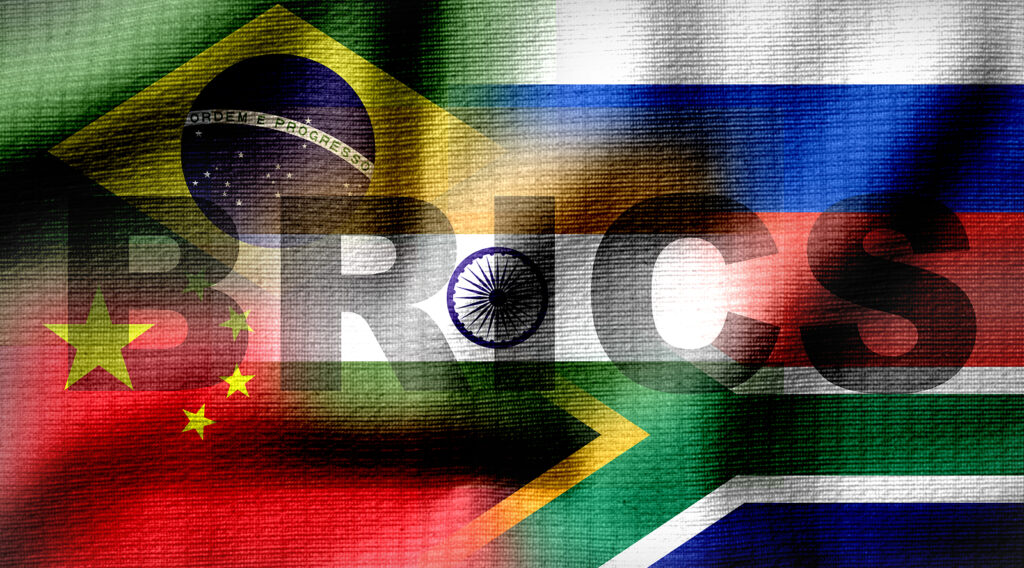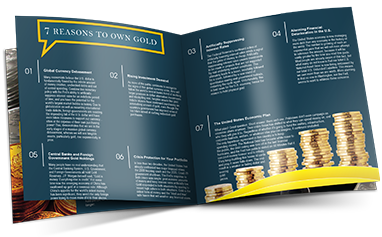
The global monetary system has experienced several shakeups over the past few years, but the introduction of a BRICS currency could completely change the status quo. Once this commodity-backed currency enters the monetary system, the US would have little control over how the world shifts financially. American investors could be the hardest hit.
What is the BRICS currency?
The BRICS currency is a proposed inter-country currency among Brazil, Russia, India, and China. Ostensibly, the new currency would facilitate transactions, trade, and investments between BRICS nations. Despite leading in collective GDP, the BRICS economies are still subject to the US dollar. The block’s new currency is viewed by members as a way to bypass American influence.
Brazilian President Lula de Silva, the project’s most fervent supporter, has compared the development of a BRICS currency to the creation of the Euro. Most of the chatter surrounding the possible currency focuses on international transactions between member states rather than domestic affairs. Right now, it’s unclear whether national currencies would be dropped in favor of a united monetary system.
BRICS Push for De-Dollarization
On its face, the development of a BRICS currency tells the story of emerging economic powers gaining influence on the world stage. When viewed from another angle, the move is a direct challenge to US hegemony. The BRICS nations were already actively pursuing the process of de-dollarization to limit their dependence on the US dollar.

The Petrodollar: A Retrospective
How To Prepare For The Impending Dollar Failure
Get Report – It’s Free!“There has been a concerted move by the BRIC countries to become more independent in international trade…away from the US dollar toward their own currencies and gold.”– Precious Metals Advisors Tim Murphy
Russia and China champion the move to circumvent the “weaponization” of the dollar in the form of strict sanctions. Even Brazil, India, and South Africa – countries with closer diplomatic ties to the US – seek to yield more fiscal autonomy A successful alternative to the dollar would mean cheaper international transactions, increased trade within the block, and a boost in global influence.
BRICS Currency vs US Dollar
The greenback has reigned supreme as the world reserve currency since WWII. After the gold standard was scrapped, the US struck a deal with oil-producing countries to trade exclusively in USD which ushered in the era of the petrodollar system. A new BRICS currency alone might not hold enough sway to convince the rest of the world to follow, but a gold-backing gives the new currency a sense of stability, security, and confidence that the US dollar has failed to provide for years.
Stay Informed: Claim our FREE Petrodollar Report to stay up to date on the latest threats to the greenback to safeguard your wealth.
What Could the BRICS Currency Be Backed By?

The most important difference between a BRICS currency and all other major currencies in circulation is the intention to have a commodity base. In a world of fiat currencies, this proposed currency would be the only one backed by a tangible asset.
Although oil, grain, and rare earth metals have been floated as potential foundations, gold seems to be the favored backing. It’s no surprise considering gold has been the go-to foundation of stable economies for centuries.
This monumental decision would mark a return to the gold standard which was effectively abandoned more than 50 years ago. The move would have far-reaching implications for both governments and everyday investors.
When will the BRICS currency be released?
There’s no set date for the release of a BRICS currency. Rumors circulated that the proposal would receive official recognition and discussion at the upcoming 2023 BRICS Summit in August. However, South Africa’s ambassador to BRICS Anil Sooklal cleared the air saying there was nothing on the docket related to the creation of a gold-backed BRICS currency.
Although the proposal is lacking a rubberstamp announcement, there’s plenty of support among leadership within BRICS member states. Brazilian President Lula recently expressed being in “favor of creating, within the BRICS, a trading currency between our countries.” State news channel RT announced the plan for a gold-backed currency to the Russian people saying the “gold standard will be of great benefit to strengthen [the] new…currency.”
As with any major economic change, the creation of a BRICS currency would likely take a few years to develop. The first step towards the new currency, according to State Duma Deputy Chairman Alexander Babakov, is for the economic block to settle their trades in local currencies. The official explained that the next move would be the circulation of digital currency between member states.
How to Invest in BRICS Currency
Since the BRICS currency has yet to be released, there’s no direct way to invest in it. However, that doesn’t preclude investors from taking advantage of this seismic shift. Although central banks have been scooping up gold at record rates, gold accumulation could jump into overdrive once the new gold-backed BRICS currency hits the market. The BRICS nations alone account for 24% of the world’s GDP and 16% of global trade1 which translates to a lot of money requiring gold backing.
Plus, over 40 countries are eagerly waiting to be brought into the economic fold. Even those not formally within the block would seek to increase their gold shares as a boon to their economies. The average investor can take advantage of this increased demand by diversifying their portfolios with gold assets. Once the BRICS nations give the green light for a new gold standard, gold prices would have plenty of runway to take off to new heights.

Everything you need to know to get started in Precious Metals
Learn how precious metals can strengthen your portfolio, protect your assets and leverage inflation.
Request the Free Guide
